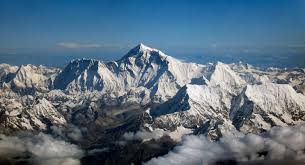-853X543.jpg)
The Glass Ceiling: A story of a Nepali Woman who climbed The Everest
by Yash Saboo December 14 2017, 3:26 pm Estimated Reading Time: 3 mins, 32 secsThe Glass Ceiling is a documentary which chronicles the untold story of Pasang Lhamu Sherpa, the first Nepali woman to summit Mt. Everest. Born into a poor Sherpa family high in the Himalayas, Pasang is not allowed to go to school like her brothers. Still an adolescent, her parents arrange a marriage for her, and expect her to help her mother farm and tend the house while her father and brothers go off to trek the Himalayas. Wilful and determined from a young age, Pasang rejects her arranged marriage and runs away with the handsome young man she falls in love with, Lhakpa Sonam Sherpa.
She starts a family business and is living happily but isn't fully convinced of her life and wants to do something big. She is a Sherpa and Sherpas climb. Suddenly it crystallizes in her mind that while there are so many things she can’t do – she can be the first Nepali woman to climb Everest. And Sherpas are expert in Nepal’s most profitable budding industry – trekking tourism. Recognizing the opportunity, Pasang and Sonam begin building their business largely through relationships with French climbers.

source:wekipedia
After her disappointing first Everest expedition, Pasang learns an important lesson – to be in control of whether or not one gets a summit spot, one needs to be in charge of the expedition. Yet, her second expedition also fails. Again in 1992, Pasang doesn't let go of her personal dream to summit Everest. She has sacrificed time away from her children and the money to mount these expensive expeditions, but she does not give up. Marc Batard asserts that Pasang and Sonam are motivated mostly by money and fame. This expedition also ends with weather preventing Pasang from summiting.
In the background, Nepal has been in the midst of a civil war, with the Jana Andolin uprising in 1990 promising power to the people. The Sherpa people, however—though discriminated against by the ruling elite—are economically and culturally isolated from Nepali politics, and therefore able to ignore the turmoil in the capital city. That is until it boils over into violence in streets, riots, and bloodshed. Pasang realizes, despite her previous political isolation, she must attempt the summit again, her mission now bigger than herself.
She leads—for the first time ever—a Nepali-sponsored expedition. Through her charisma and political skill, Pasang becomes the person through whom a fledgling nation stakes its claim to a mountain commandeered by foreign adventure seekers.
With limited financial support, she attempts the mountain a fourth time. There is exaltation on April 22, 1993, when it is radioed she has reached the summit. The following day word spreads that she has not returned. Her husband and others desperately try to rescue her, but it is too late. When her body is finally returned to Kathmandu, it is an extraordinary cultural event. Throngs of weeping mourners carry her through the streets.
While this story takes place largely on Mt. Everest, it is much more than just a climbing story. Rather, it is the story of how an uneducated village girl came to summit the highest mountain in the world, fighting for her right to do it at every juncture. The Glass Ceiling is a freedom fighter story about an unlikely hero. Pasang lost her life on the way down the mountain, and there is much controversy around her death. This film, however, focuses not on how or why she died, but why she mattered so deeply to a nation.
Pasang became a hero in Nepal, but she did not live to share her story. The filmmakers need their audiences' help in financing and acquiring high-altitude cinematic footage, an original musical score, and of course editing, colour correction, sound mix and visual effects.
The Glass Ceiling is a true story of adventure, romance, politics, courage and a woman who sacrificed everything to pursue her dream. Pasang’s fight for gender and racial equality turned "impossible into possible" for millions of Nepali women, and her story is one of universal appeal that will resonate with people of all ages and all demographic backgrounds.




-173X130.jpg)
-173X130.jpg)
-173X130.jpg)
-173X130.jpg)
-173X130.jpg)
-173X130.jpg)
-173X130.jpg)
-173X130.jpg)